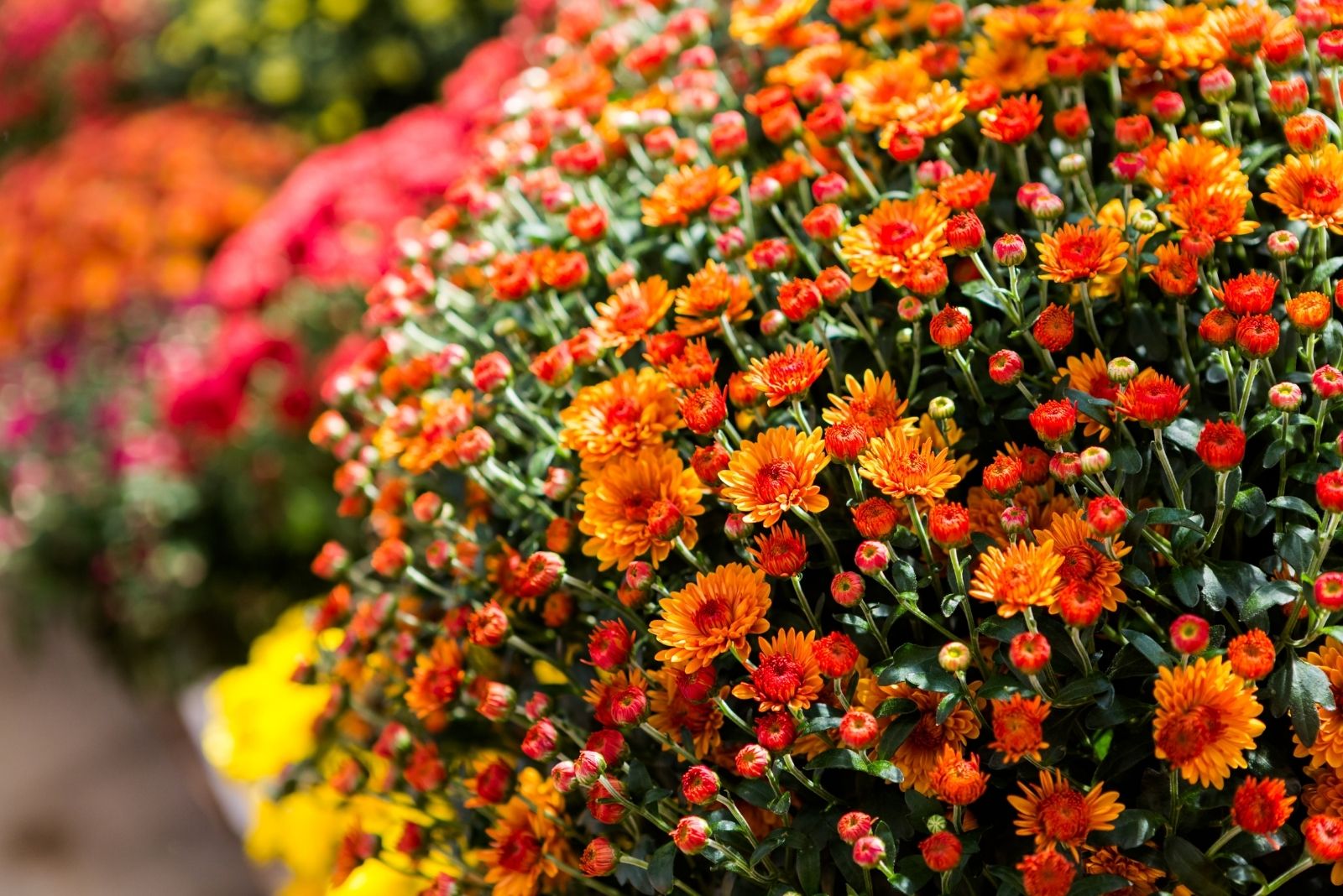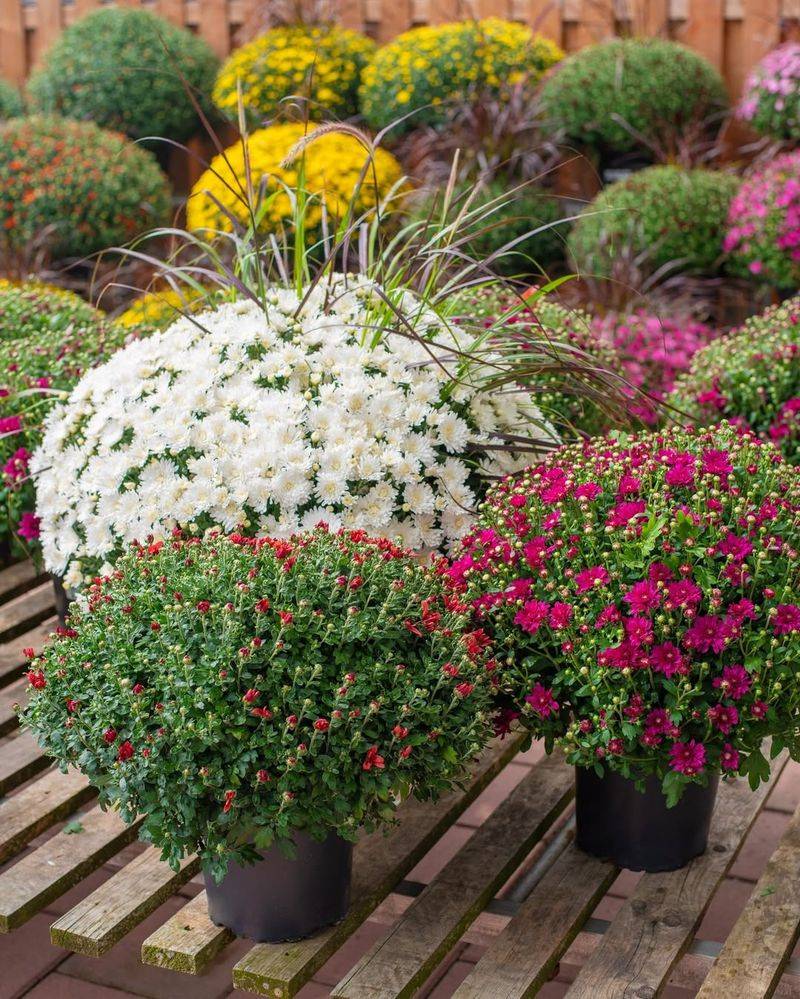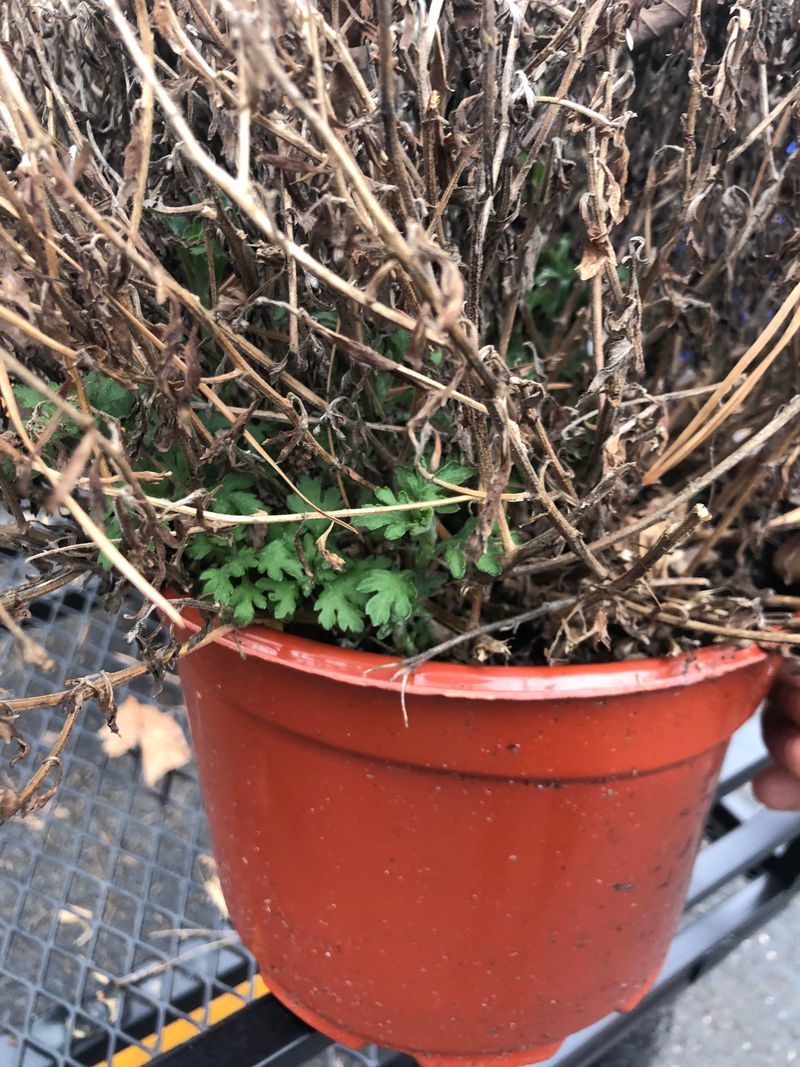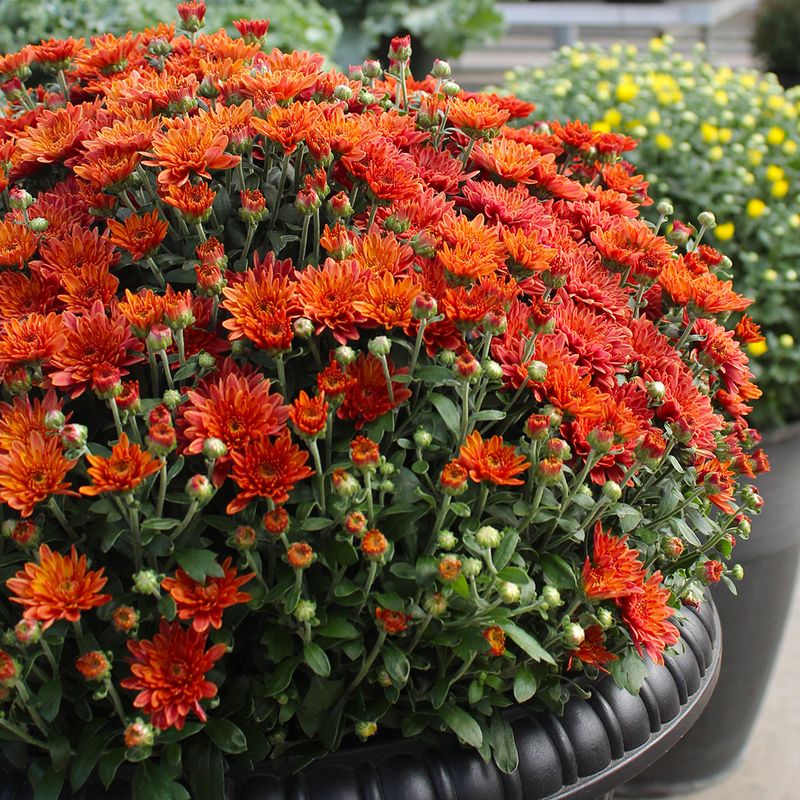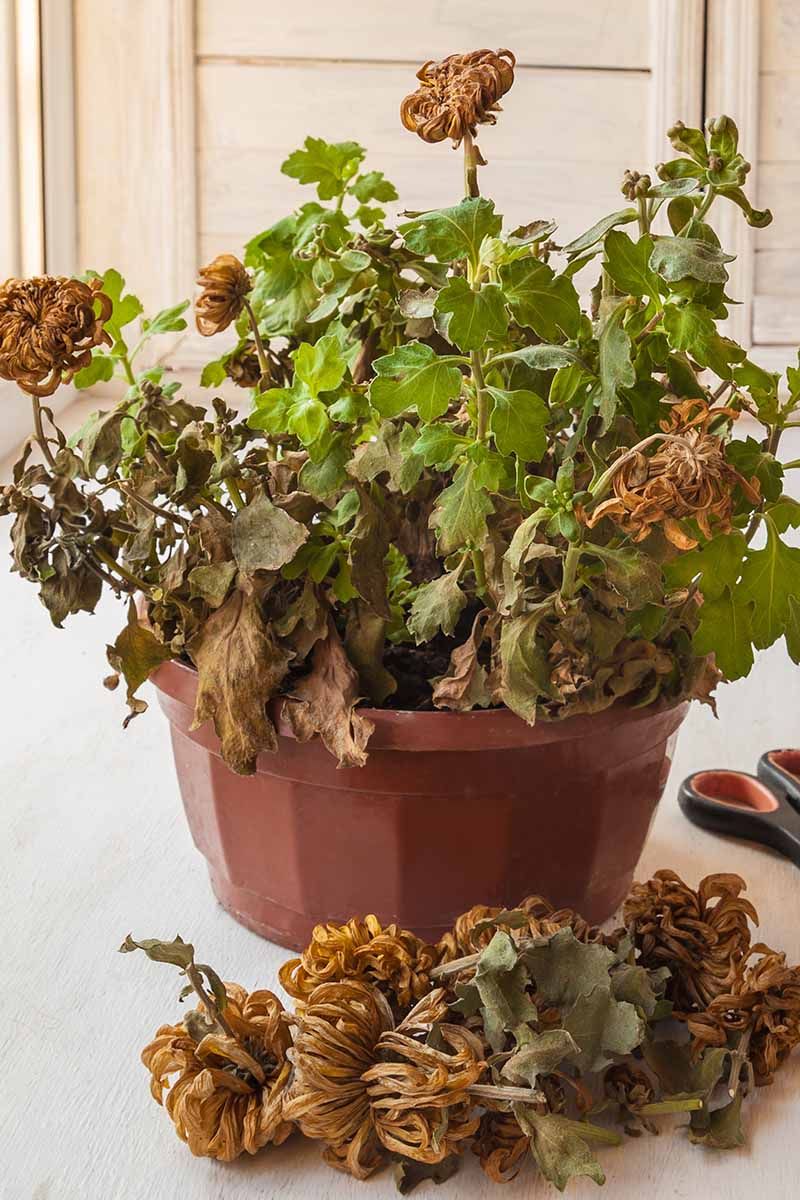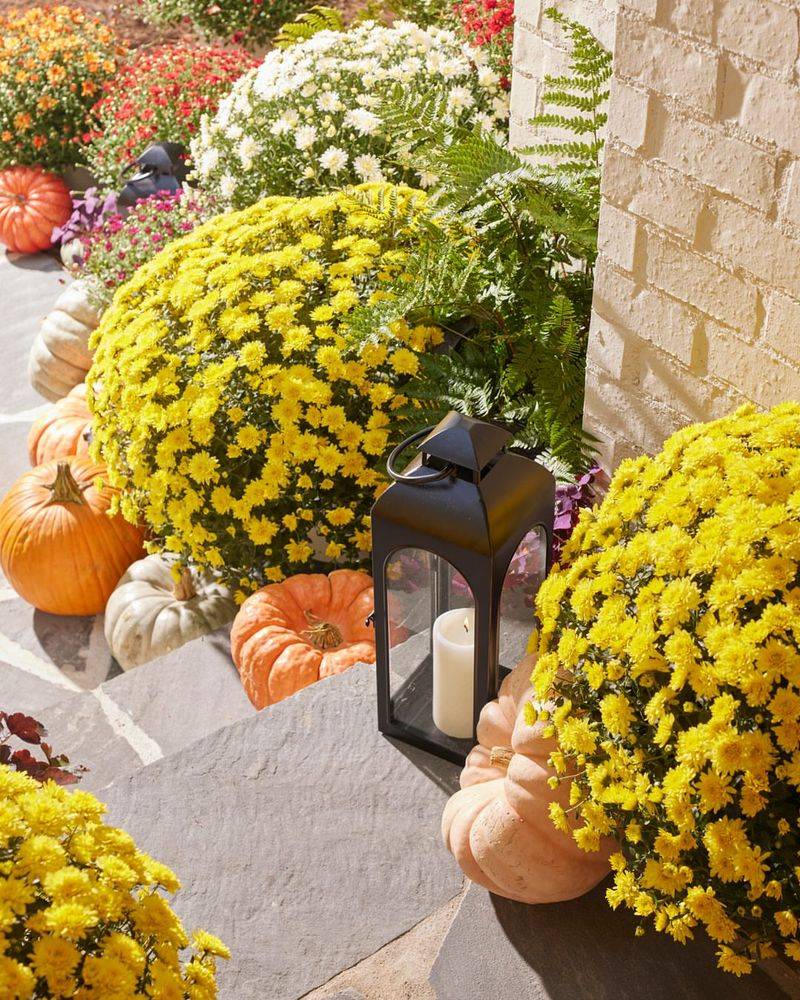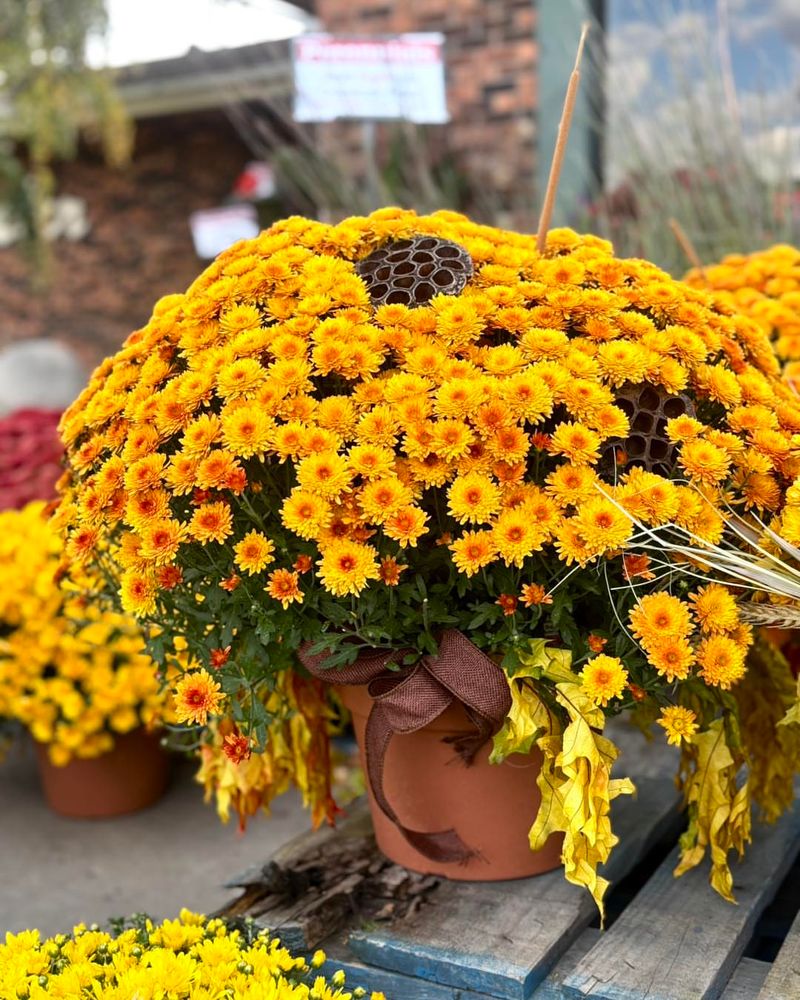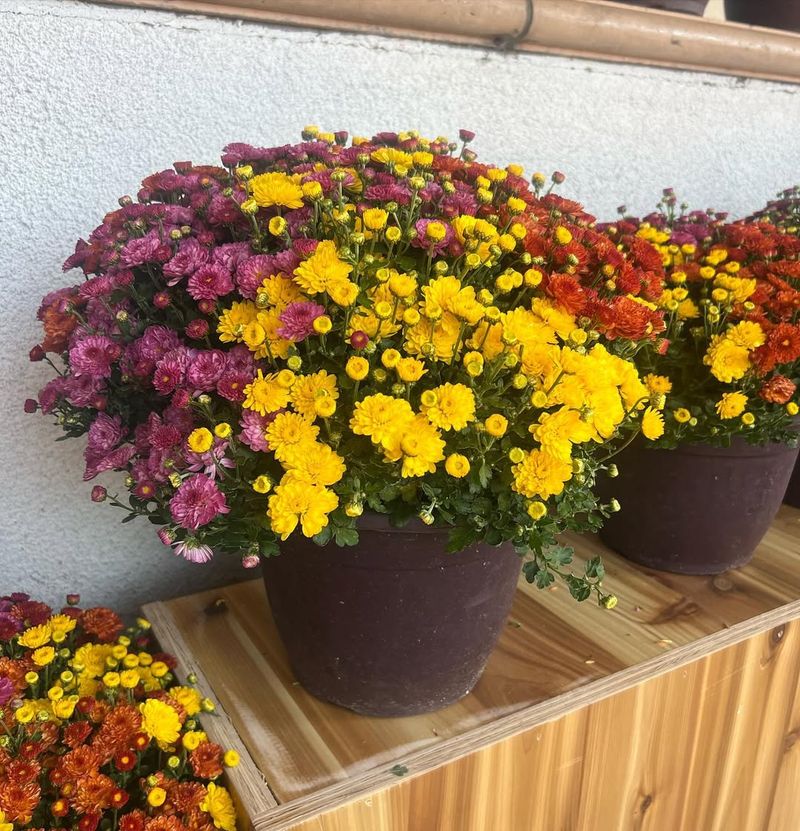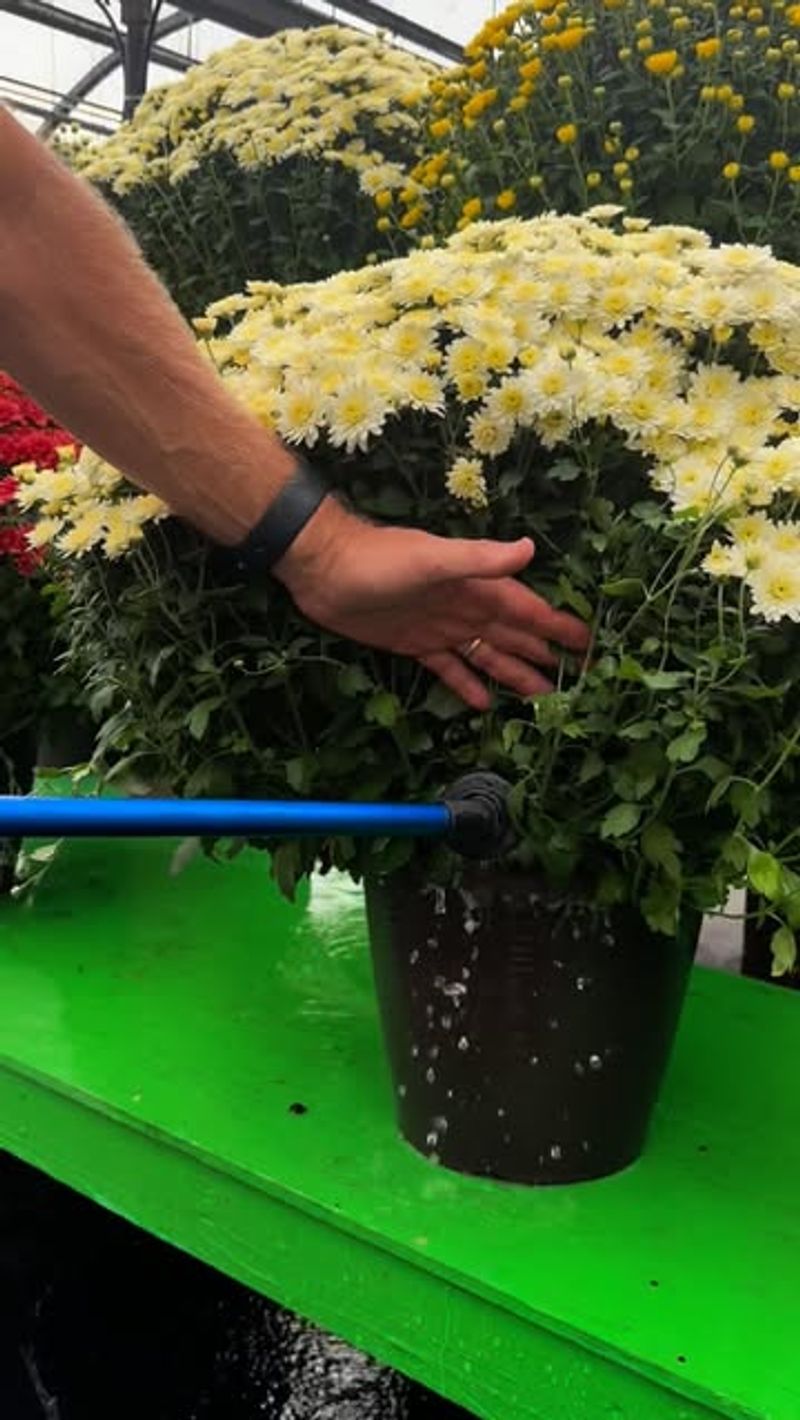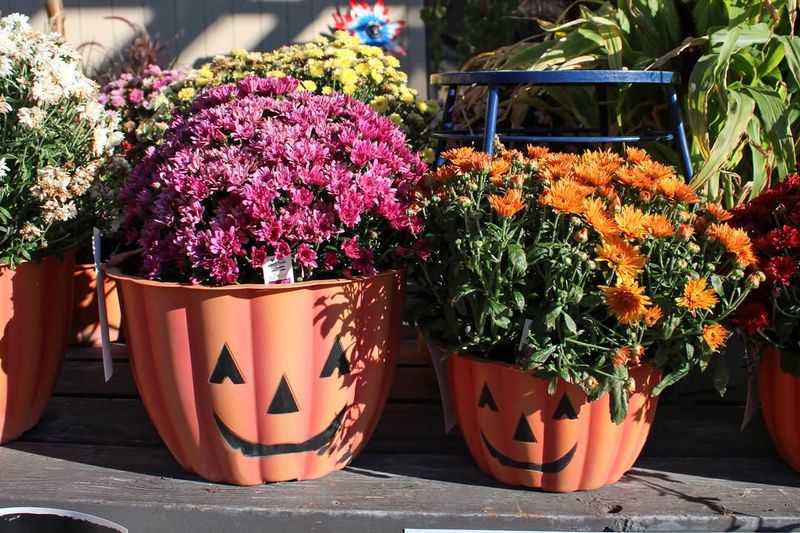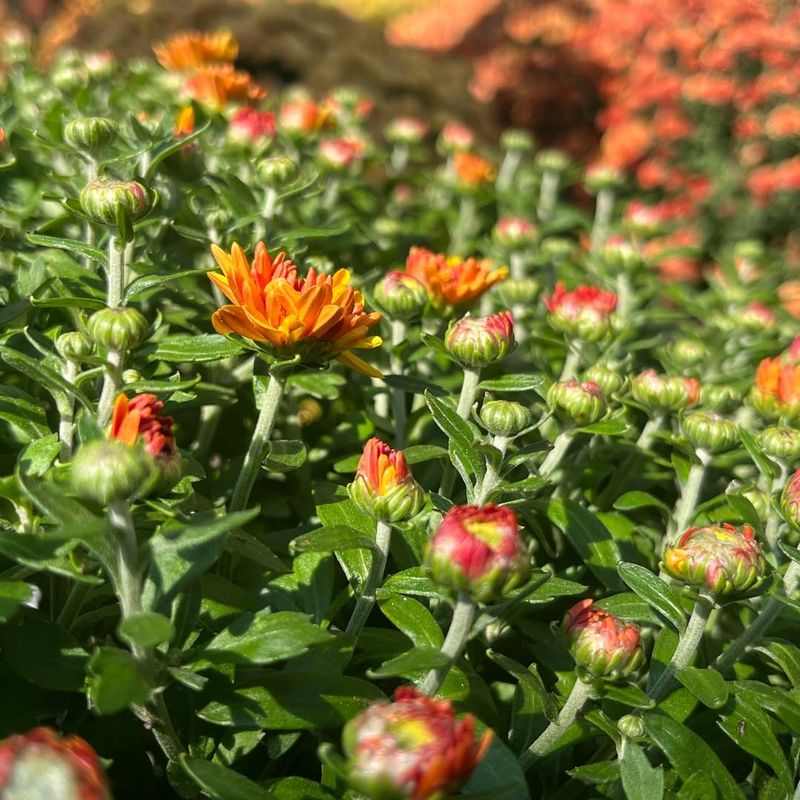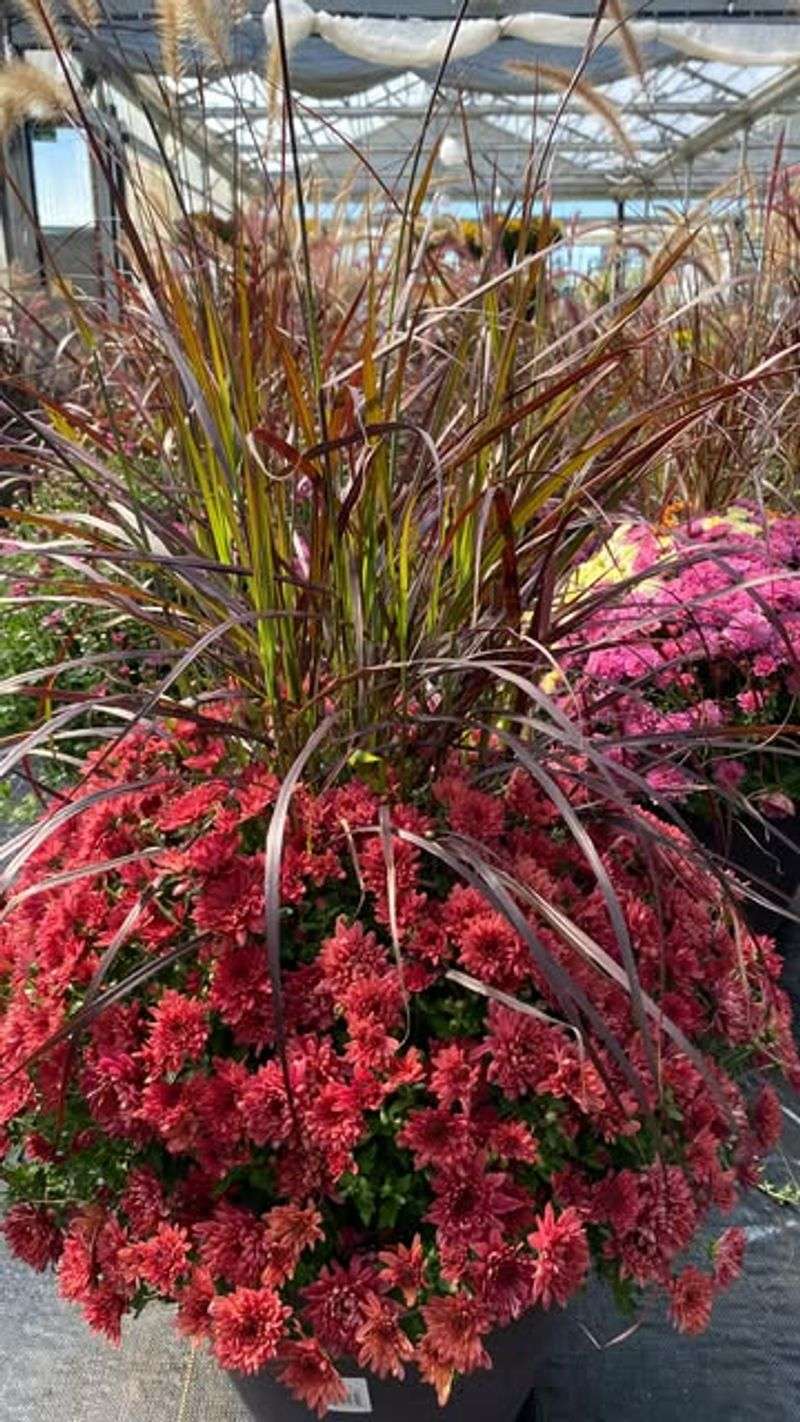Fall in Ohio means cooler weather, football season, and gardens filled with colorful mums. But buying the right mums can be trickier than it looks, and many gardeners end up with plants that fade quickly or struggle to survive.
Knowing what to look for before you buy can save you time, money, and disappointment. This guide covers 11 common mistakes to help you choose healthy mums that will thrive in your Ohio garden all season long.
1. Choosing Plants That Are Already Fully Bloomed
Many gardeners grab the prettiest, fullest mums at the store, thinking they’ll get instant color. But plants already covered in open flowers won’t last as long in your garden.
In my experience in Ohio gardens, I often see this mistake happen when people shop early in September. Look for mums with tight buds just starting to show color instead.
These will open gradually and give you weeks more blooms. A plant with mostly buds means you’ll enjoy the show from start to finish rather than catching only the finale.
2. Ignoring Root Health Before Purchase
Root condition tells you everything about a mum’s future, yet most shoppers never check underneath. Gently tip the pot and peek at the roots before buying. Healthy roots should be white or light tan, not dark brown or mushy.
Root-bound plants with roots circling tightly around the pot will struggle once planted. Ohio’s clay soil makes it even harder for cramped roots to spread out and establish.
Give the pot a gentle squeeze to feel if roots are pushing through drainage holes, which signals the plant has been sitting too long.
3. Picking Colors Without Considering Your Garden Layout
Grabbing whatever color catches your eye seems harmless until you get home and realize nothing matches. Your garden’s existing colors, your house trim, and nearby plants all matter when choosing mum shades.
Orange mums might clash with pink asters already blooming in your bed. Take a photo of your garden space before shopping so you can reference it at the nursery.
Consider how the mum colors will look next to your front door, mailbox, or porch furniture. Planning ahead prevents buying duplicates or shades that fight with each other instead of creating a pleasing display.
4. Failing To Inspect For Pests And Diseases
A quick glance isn’t enough when buying mums because pests hide under leaves and inside flowers. Aphids, spider mites, and powdery mildew spread quickly once you bring an infected plant home.
Turn leaves over and check stems carefully before putting any plant in your cart. Look for sticky residue, tiny bugs, white powdery coating, or yellowing leaves as warning signs.
Ohio’s humid fall weather encourages fungal problems, so starting with clean plants is essential. One diseased mum can infect your entire garden, making this inspection step worth the extra minute.
5. Overlooking Plant Size And Spacing Needs
That compact little mum at the store can double in width once you water it and let it settle in. Crowding plants together looks full initially but leads to poor air circulation and disease problems. Each mum needs room to spread its branches and dry out between waterings.
Check the plant tag for mature size information before deciding how many to buy. Space mums at least twelve to eighteen inches apart in garden beds.
In my Ohio garden, I’ve learned that fewer well-spaced plants look better and stay healthier than a crammed display that struggles by mid-October.
6. Not Considering Ohio’s Unpredictable Fall Weather
Ohio weather swings from warm to freezing overnight in autumn, catching unprepared gardeners off guard. Some mum varieties handle cold better than others, but most garden centers don’t label cold hardiness clearly.
An early freeze in late September can damage tender varieties before they’ve even peaked. Ask nursery staff which varieties tolerate temperature drops best for our region. Garden mums bred for fall displays often handle light frosts, but decorative types meant for indoor use won’t survive outside.
Keep frost cloth handy for those surprise cold snaps that hit before Halloween, extending your mums’ blooming season considerably.
7. Buying From Unreliable Or Unknown Sources
Cheap mums from big box stores or roadside stands can be tempting, but quality varies wildly. Plants sitting in parking lots without proper care dry out quickly and may have hidden problems. Reputable nurseries take better care of their inventory and can answer questions about varieties and care.
Local garden centers in Ohio often carry mums suited to our climate and growing conditions. They’re more likely to have fresh stock that hasn’t been stressed by neglect or extreme temperatures.
Spending a bit more at a trusted source usually means healthier plants that last longer, making it worth the extra few dollars per pot.
8. Neglecting To Ask About Watering Requirements
Mums are thirsty plants, especially when blooming heavily in fall heat. Many gardeners assume they need less water as temperatures cool, but that’s not true for actively flowering mums. Dry soil causes buds to drop and leaves to brown before the plant reaches its full potential.
Feel the soil daily and water when the top inch feels dry to the touch. Container mums dry out faster than those planted in the ground, sometimes needing water twice daily during warm spells.
Ohio’s clay soil can also drain poorly, so balance is key—consistent moisture without waterlogged roots keeps mums looking their best through autumn.
9. Assuming All Mums Bloom At The Same Time
Garden centers rarely label mums by bloom time, leaving shoppers to guess. Early-season varieties peak in September, while late bloomers don’t hit their stride until October. Buying only one type means your display might finish before fall really gets going.
Mix early, mid, and late season varieties to keep color going from September through November. Ask staff about bloom timing or check plant tags for clues.
In my Ohio garden, I’ve found that staggering bloom times creates a constantly changing display rather than one big burst followed by empty pots. This strategy works especially well for front porches and entryways.
10. Not Planning For Winter Care Or Survival
Most people treat mums as annuals and toss them after frost, but many varieties can survive Ohio winters with proper care. The key is buying true garden mums rather than florist types and planting them early enough to establish roots. Late October purchases rarely have time to settle in before the ground freezes.
If you want perennial mums, plant them by early September and mulch heavily after the first hard freeze.
Cut back dead stems in spring rather than fall. Knowing your intentions before buying helps you choose the right varieties and timing for either seasonal color or long-term garden additions.
11. Forgetting To Consider Companion Plants
Mums look best when paired with other fall plants, not sitting alone in a bare bed. Ornamental grasses, asters, sedum, and pansies all bloom during mum season and create layered, interesting displays. Shopping only for mums means missing opportunities to build a complete autumn garden.
Think about texture and height when combining plants with your mums. Tall grasses provide backdrop, while trailing pansies soften container edges.
In Ohio gardens, I’ve noticed that mixed plantings also help disguise fading mums as other plants take center stage. Browse the entire fall section at the nursery instead of heading straight for the mum display alone.

